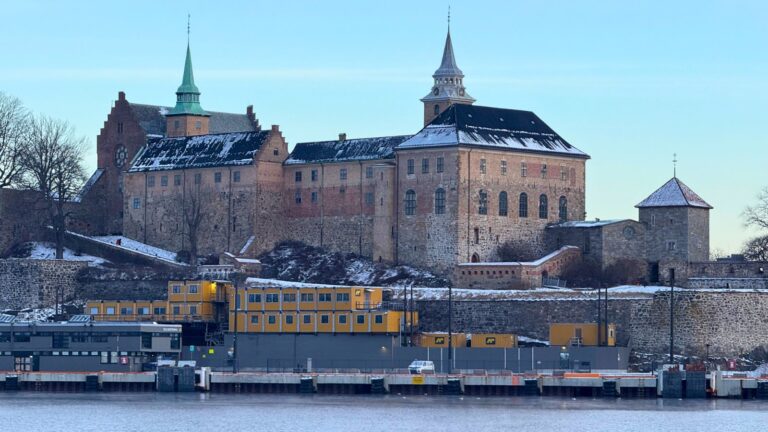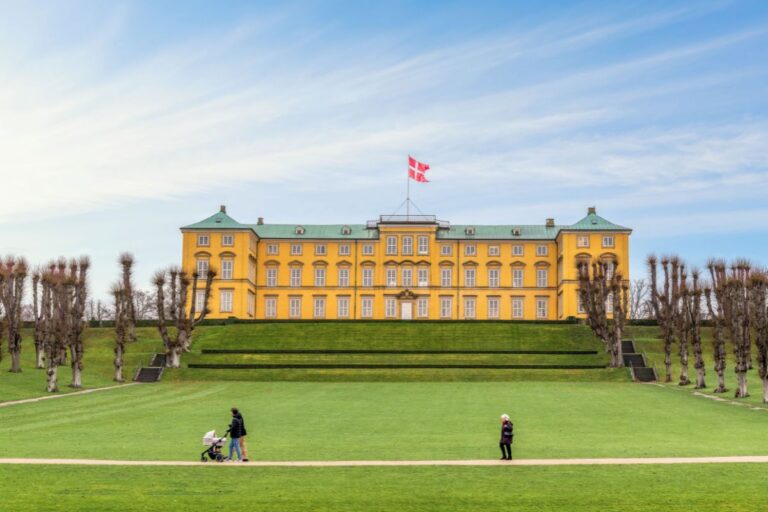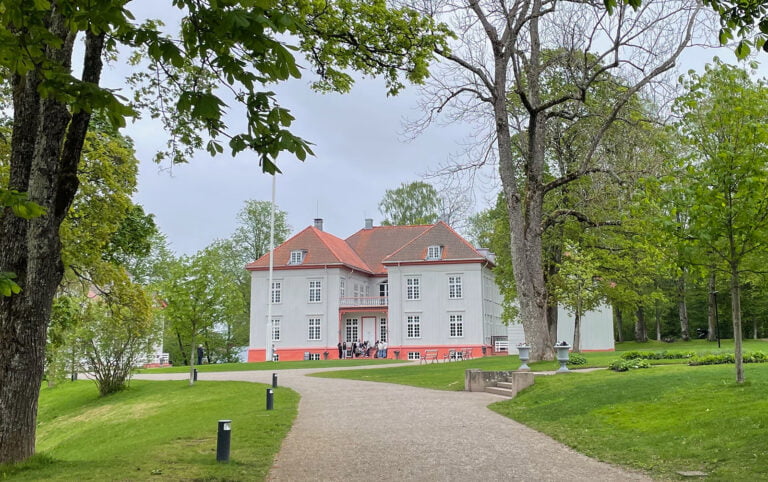When the Napoleonic Wars raged across Europe, Norway may have seemed far from the front lines. Yet the decisions made would prove pivotal, laying the foundations for Norway’s future as an independent nation.
Since moving to Norway, I’ve become increasingly fascinated by the history of this part of the world. Like many, I was already familiar with the Viking Age, but I’ve since discovered that some of the most defining moments in Norway’s story came later.

One of the most significant, yet often overlooked, chapters in the history of Norway is Norway’s experience during the Napoleonic Wars.
For many, Norway's path to independence begins in 1814 with the drafting of the Constitution at Eidsvoll. But the events that led up to that moment were shaped by the turmoil of the Napoleonic Wars, a sweeping conflict that redrew the map of Europe.
While Norway was never directly a battlefield, the kingdom was deeply affected by the war’s political alliances, economic hardship, and eventual diplomatic fallout.
The wars ultimately brought an end to the centuries-old Danish-Norwegian union and set the stage for modern Norway to emerge.
Danish-Norwegian Union & the French Connection
At the start of the 19th century, Norway was part of a dual monarchy ruled from Copenhagen.
Denmark-Norway was officially neutral when the Napoleonic Wars began, but its strategic location and naval resources soon made it a target for both Britain and France.
The British, fearing that Napoleon might gain control of the powerful Danish-Norwegian fleet, launched a pre-emptive attack in 1807 and bombarded Copenhagen. The Danes responded by aligning with Napoleon, dragging Norway into a war it had not chosen.
This decision would have profound consequences for the Norwegian people. As Britain established a naval blockade across the North Sea, trade routes were severed and essential imports including grain dried up.

Norway, already struggling with harsh winters and poor harvests, faced widespread famine. The war years became known as hungersnøden, or “the hunger emergency.”
Life Under Blockade
The British blockade hit Norway especially hard. The country relied heavily on imported food, and with the sea routes cut off, many Norwegians experienced severe shortages.
Smuggling became rampant along the coast, and local communities were forced to become more self-sufficient, relying on fishing, foraging, and creative forms of subsistence.
In Bergen, it was reported that some families survived on little more than seaweed and bark during the worst years. Salt, vital for food preservation, became a prized commodity and was sometimes extracted laboriously from seawater.
The economic isolation also led to a surge in nationalism and self-reliance. Norwegians began to question their role in the union with Denmark, particularly as it became clear that Danish priorities were centred on defending the homeland and maintaining favour with France, rather than alleviating Norway’s suffering.
The Treaty of Kiel and the End of the Union
The turning point came in 1814, when Napoleon’s power began to collapse. Denmark, having backed the losing side, was forced to cede Norway to Sweden in the Treaty of Kiel.
This diplomatic deal was struck without Norwegian involvement, negotiated as part of the wider reordering of Europe by the victorious powers.
For Norwegians, it felt like a betrayal. After years of hardship and war, they were now being handed over like spoils. The Danish king, Frederick VI, signed the treaty under duress, giving up Norway while retaining the Faroe Islands, Iceland, and Greenland.
But the Norwegians had other plans. Rather than quietly accept Swedish rule, they declared independence, convened an assembly at Eidsvoll, and drafted a constitution.
At the centre of this response was Prince Christian Frederik, the Danish heir stationed in Norway. Rather than enforce the treaty, he rallied Norwegian leaders to reject the handover and initiated the process that led to the 1814 Constitution.
Although the independence movement was ultimately suppressed by Swedish military pressure, the Constitution survived. Norway entered into a union with Sweden as a separate kingdom with its own institutions.
Sweden had military superiority, but a full conquest was avoided through negotiation. The resulting union allowed Norway to keep its constitution and establish its own parliament, while recognising the Swedish monarch as head of state.
The seeds of full independence, which would come in 1905, had been planted.
Where to Explore Norway’s Napoleonic Era
Although the Napoleonic Wars left few battlefields in Norway, their impact can still be traced through a number of historic sites, museums, and coastal defences that tell the story of a nation on the edge of change.
Eidsvoll Manor
The most important site connected to the aftermath of the Napoleonic Wars is Eidsvoll Manor, located north of Oslo. This is where, in the spring of 1814, 112 Norwegian delegates gathered to draft and sign the Constitution.

The building has been carefully restored to reflect its appearance during that pivotal year and now operates as a museum.
Visitors can walk through the very rooms where modern Norway was born and learn how the fallout from the wars set the stage for independence.
Norwegian Maritime Museum, Oslo
To understand how the British blockade affected Norway’s seafaring nation, the Norwegian Maritime Museum offers context through exhibitions on trade, shipbuilding, and naval history.
Artefacts and models from the early 19th century reveal the disruption of trade and the growing importance of coastal resilience during the blockade.
Bergen’s Hanseatic and Coastal History
While Bergen's Hanseatic Museum primarily focuses on earlier trade networks, its historic harbourfront buildings and coastal heritage offer insight into how cities like Bergen struggled to adapt during the years of isolation. Side exhibitions often touch on the wider maritime pressures of the Napoleonic period.
Coastal Fortresses and Blockade Defences
During the blockade, Norway relied heavily on coastal fortifications to deter British ships and protect local communities. Several of these sites remain today and can be visited as historical attractions or scenic heritage areas.
Fredriksten Fortress, Halden
Although better known for its role in earlier wars with Sweden, Fredriksten Fortress was still maintained during the Napoleonic period and symbolises Norway’s long-standing military defences.
The site now includes a museum, walking trails, and panoramic views over the borderlands.
Oscarsborg Fortress, Drøbak
Located in the Oslofjord, Oscarsborg was modernised later in the 19th century but occupies a strategic point that had been fortified earlier to help defend the approaches to Christiania (modern-day Oslo).
The natural bottleneck here made it a key location for monitoring British naval activity during the blockade.
Staverns Fortress, Larvik
The small town of Stavern played an outsized role during the Napoleonic Wars as the home port of Denmark-Norway’s modest naval presence in the region.
Staverns Fortress, located on Citadel Island just offshore, was used as a supply base and coastal battery during the conflict. Today, it’s a popular summer destination with walking paths and guided tours available in the warmer months.
Christiansø and Fredrikstad Fortifications
Other coastal towns such as Fredrikstad and Kristiansand also maintained defensive structures to help monitor ship traffic and deter British incursions.
The star-shaped old town of Fredrikstad, for example, includes intact ramparts and a military museum, giving visitors a glimpse into Norway’s defensive mindset during the early 19th century.
A Lasting Legacy
The Napoleonic Wars may not have brought armies to Norwegian soil, but their impact was felt in every village and harbour.
The economic hardship, political realignment, and growing sense of national identity during this period marked a decisive shift in Norway’s history. It was a time of suffering, certainly, but also one of awakening.
Today, the role of the Napoleonic Wars in Norwegian history is rarely given the same attention as the Viking Age or the Second World War. Yet without this turbulent chapter, the events of 1814, and the eventual path to full independence, might never have occurred.
While there are no national holidays marking the Napoleonic period, its effects are embedded in the very foundations of modern Norway, most clearly in the Constitution that continues to shape the country to this day.

